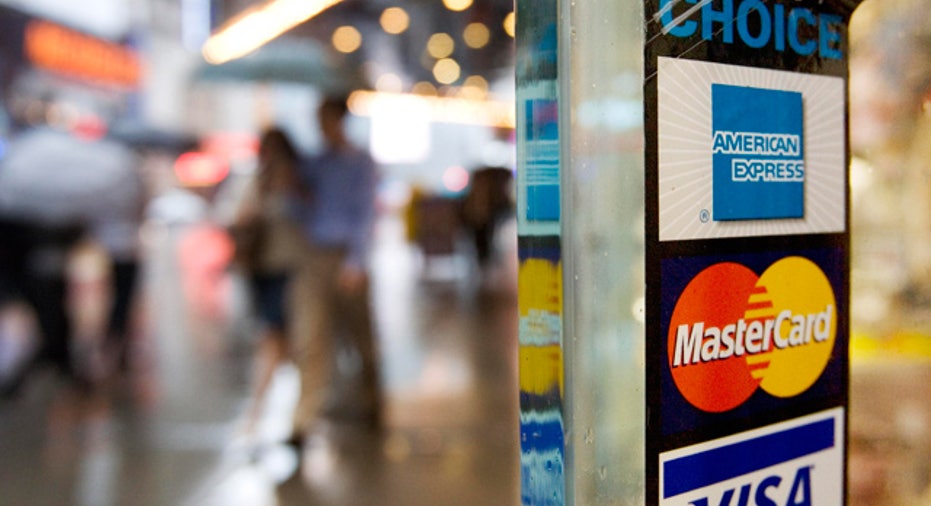Consumers, U.S. Seek Spending/Saving Balance

Spending is good because it generates demand for products, which helps the economy grow by creating jobs. And Americans need jobs.
Saving is good because Americans tend not to save enough and then borrow when they need money, which can lead to credit bubbles like the one that burst in 2008 leading to the worst financial crisis in decades.
So which is it? Should Americans be spending or saving? The reality is that it’s a ‘chicken or the egg’ type of question, one that has no real answer.
The proper balance between spending and saving, one that contributes to economic growth without creating the threat of a dangerous credit bubble, can only be achieved when unemployment drops to a more acceptable level, incomes start rising again and consumers establish their own comfort levels for discretionary spending.
“The guy making $50,000 a year ten years ago could have borrowed and spent $60,000 a year. Now that same guy is lucky to get approved for a credit card.”
But don’t blink because if history is any indicator the moment at which that balance is reached will pass quickly and U.S. consumers will revert back to form. That is, spending and borrowing beyond their means.
Greg McBride, senior financial analyst at Bankrate.com, doesn’t believe for a moment that the lessons derived from the prolonged fallout that followed the collapse of the U.S. housing market will lead to meaningful long-term changes in consumer behavior.
“I have no doubt consumers will eventually start spending and borrowing more than they can afford to,” McBride said.
For the moment, however, Americans are still feeling the sting of the deepest recession in decades, so it will probably take a few years before those bad habits start to emerge again.
The issue arose earlier this week when the Federal Reserve revealed that consumer credit jumped 10% in November, the sharpest increase in a decade. The $20.4 billion surge in outstanding consumer credit marked the third month-over-month increase in a row and the largest monthly gain since 2001, according to the Fed. The substantial increase was attributed to consumers taking out loans to buy cars and using their credit cards to splurge on holiday gifts.
The data was initially viewed as a positive sign for the stumbling U.S. economy, viewed from the perspective that consumers are apparently feeling more comfortable about taking on debt.
For months consumer sentiment has hovered at recessionary levels, hardly a surprise given the stubbornly high unemployment rate and a relentless decline in U.S. home prices. With Americans fearing for their jobs (or unable to find one), and standing by helplessly as equity in their homes evaporates, a deep reluctance to spend has set in. That reluctance is perhaps the single biggest reason the economic recovery stumbled in 2011. Consumer spending, after all, accounts for 70% of the U.S. economy.
But given the events of the past decade, it’s a little difficult to interpret an increase in consumer borrowing as a positive sign for the economy. The reason the economy nearly imploded in 2008 was that many Americans had taken on far too much debt. When they could no longer pay off their mortgages, car loans and credit cards, the defaults that followed nearly dragged down the global economy.
Ostensibly, a silver lining to the debt crisis was that Americans were deleveraging at rates not seen in decades, paying down their mortgages, car loans and student loans, and putting money aside for a rainy day.
So was the November surge in borrowing a sign that consumers were returning to the carefree days before the financial crisis?
“Hopefully, the painful financial sins of the past have not dimmed so much that consumers begin digging themselves into a financial abyss again. Maybe they binged during the holidays, but let’s hope it was just a splurge and not indicative of the return of irresponsible spending,” said Gail Cunningham with the National Foundation for Credit Counseling.
Cunningham said a recent NFCC Financial Literacy Survey showed that consumers remain skittish about spending. The survey asked consumers “if your financial situation were to improve within the next year, would you be likely to resume spending at last year’s level?”
Twenty-five percent of the respondents said they would maintain their spending levels from the prior year if things got better, while 28% said they would spend even more than the previous year. But 45% said they would continue spending less even if their financial situation improved.
And consumer confidence has dimmed markedly as the recovery has dragged on. In 2009, 45% of respondents to an NFCC survey indicated they planned to resume spending at the previous year’s level. In 2011, only 25% said they would.
McBride says most Americans newfound thriftiness may not be a choice. Skittish lenders (not least the big credit card companies), badly burned by the lax lending standards of a decade ago, are now reluctant to approve loans to anyone without a stellar credit history.
“Consumers will not spend themselves silly because they can’t. Incomes are largely flat, and consumer cannot lean against the crutch of credit to support their lifestyles,” said McBride. “The guy making $50,000 a year ten years ago could have borrowed and spent $60,000 a year. Now that same guy is lucky to get approved for a credit card.”



















